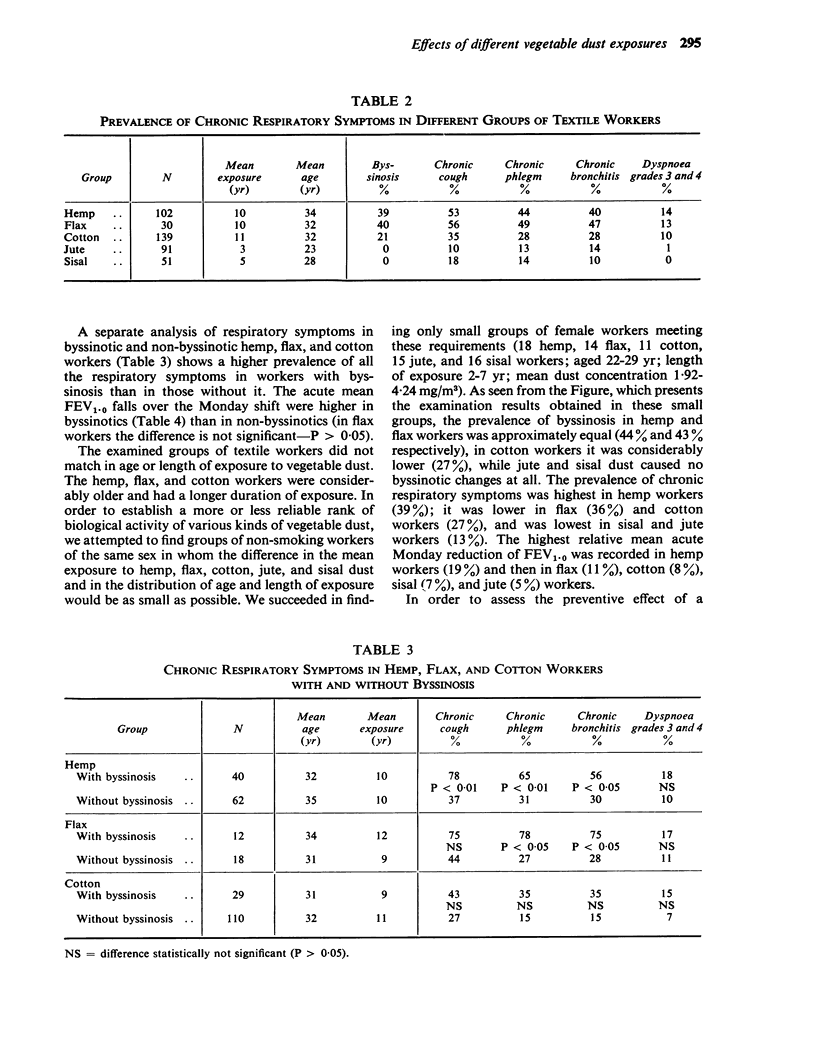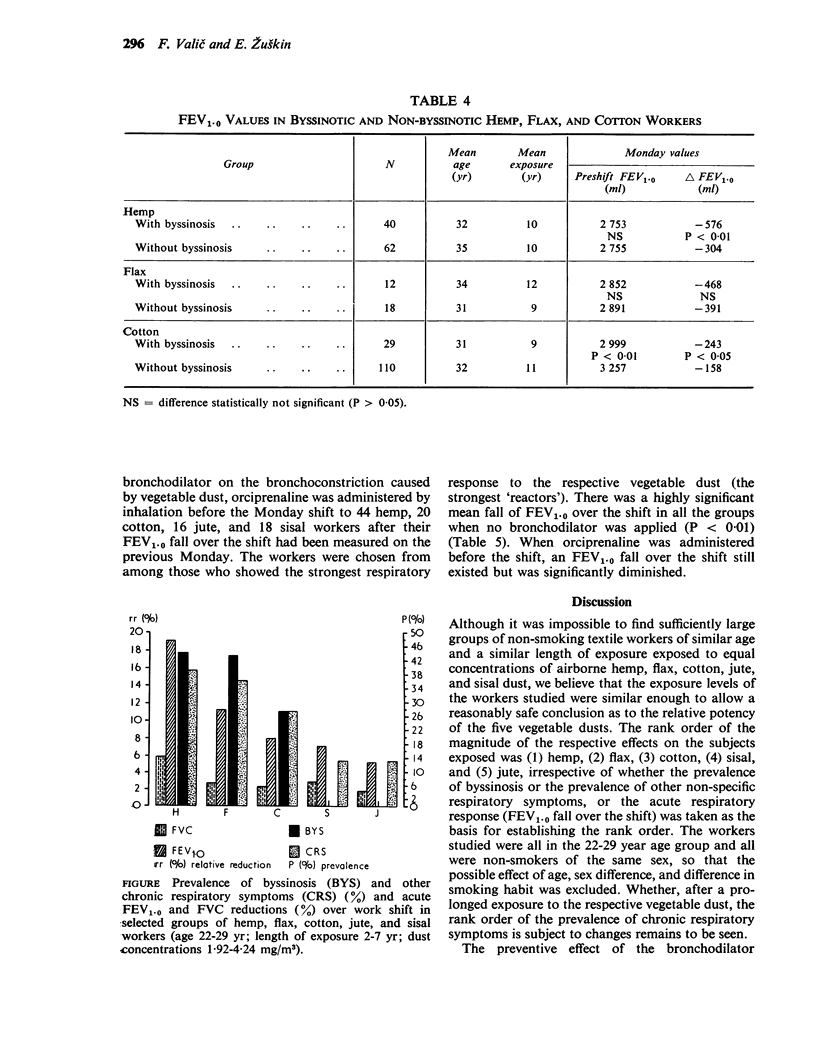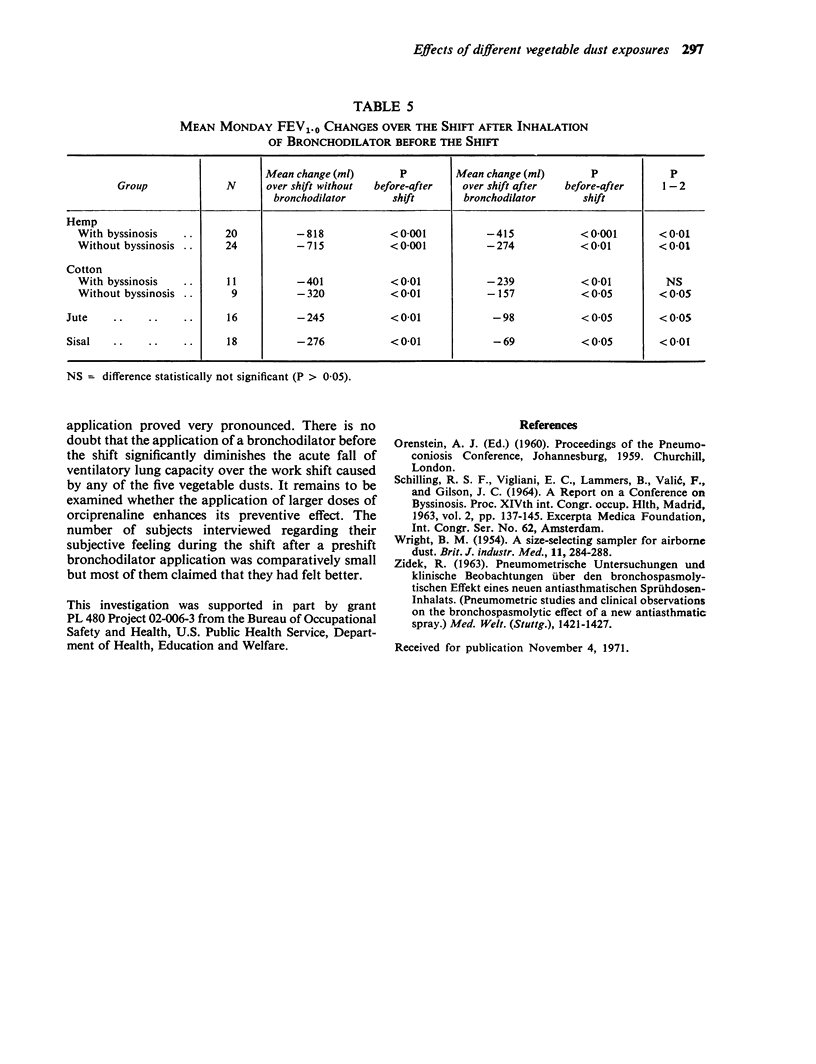Abstract
Valić, F., and Žuškin, E. (1972).Brit. J. industr. Med.,29, 293-297. Effects of different vegetable dust exposures. In order to establish the rank of biological activity of vegetable dusts, five groups of non-smoking female workers exposed to similar concentrations of hemp, flax, cotton, sisal, and jute airborne dust, respectively, were compared as to the prevalence of byssinosis, chronic respiratory symptoms, and one-second expiratory volume changes over the Monday shift. The groups were selected in such a way as to differ in the distribution of age and length of exposure to the respective dust as little as possible.
The prevalence of byssinosis in hemp and flax workers was approximately equal (44% and 43% respectively), in cotton workers it was considerably lower (27%), while no byssinosis was caused by either sisal or jute dust. The highest prevalence of other chronic respiratory symptoms was recorded in hemp workers (39%), followed by flax (36%) and cotton workers (27%), while in sisal (13%) and jute workers (13%) it was the lowest.
Significant mean FEV1·0 reductions over the shift were recorded in all the groups of textile workers with the largest reductions in hemp workers (19%) followed by flax (11%), cotton (8%), sisal (7%), and jute workers (5%). The application of orciprenaline before the shift diminished the mean acute FEV1·0 falls over the work shift in all the groups studied.
Full text
PDF




Selected References
These references are in PubMed. This may not be the complete list of references from this article.
- WRIGHT B. M. A size-selecting sampler for airborne dust. Br J Ind Med. 1954 Oct;11(4):284–288. doi: 10.1136/oem.11.4.284. [DOI] [PMC free article] [PubMed] [Google Scholar]


